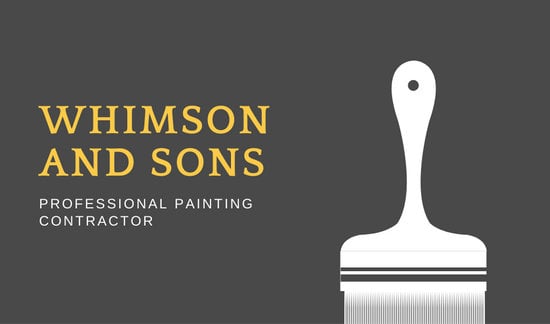Investigate The Duty Of Seasonal Factors In The Success Of Industrial External Painting And Reveal The Most Effective Times To Protect Enduring Results For Your Task
Investigate The Duty Of Seasonal Factors In The Success Of Industrial External Painting And Reveal The Most Effective Times To Protect Enduring Results For Your Task
Blog Article
Published By-Fox Urquhart
When you're intending a business outside painting project, seasonal aspects can make or damage your results. You'll want to think about exactly how temperature and moisture influence paint application and drying out times. Selecting the appropriate season can guarantee your paint sticks properly and lasts longer. But which periods are genuinely the most effective for this type of work? Allow's discover the key elements that can affect your job's success.
The Impact of Temperature on Paint Application
When you're planning a commercial external paint job, the temperature level can substantially influence just how well the paint sticks and dries out.
Ideally, you want to paint when temperature levels range in between 50 ° F and 85 ° F. If it's as well cold, the paint might not cure correctly, resulting in problems like peeling or breaking.
On the flip side, if it's also hot, the paint can dry too rapidly, stopping proper bond and leading to an irregular finish.
You should also consider the time of day; morning or late afternoon provides cooler temperature levels, which can be more positive.
Constantly check the manufacturer's suggestions for the details paint you're using, as they often give advice on the ideal temperature level variety for optimal results.
Moisture and Its Effect on Drying Times
Temperature level isn't the only ecological aspect that influences your commercial external paint project; humidity plays a considerable duty as well. High moisture levels can slow down drying times dramatically, affecting the total top quality of your paint work.
When the air is filled with dampness, the paint takes longer to heal, which can result in problems like inadequate attachment and a higher threat of mildew growth. If you're painting on an especially damp day, be gotten ready for prolonged delay times in between layers.
It's important to keep track of neighborhood weather conditions and strategy appropriately. Preferably, aim for moisture levels in between 40% and 70% for optimal drying.
Maintaining these factors in mind ensures your project stays on track and provides a long-term surface.
Best Seasons for Commercial Outside Paint Projects
What's the best time of year for your industrial outside paint tasks?
Spring and early autumn are usually your best choices. Throughout these periods, temperatures are mild, and humidity levels are often lower, creating excellent problems for paint application and drying.
Stay clear of summertime's intense heat, which can trigger paint to dry also quickly, resulting in poor bond and coating. Likewise, winter season's cold temperatures can hinder correct drying out and healing, taking the chance of the durability of your paint task.
Aim for days with temperatures in between 50 ° F and 85 ° F for ideal outcomes. Remember to inspect best commercial painting contractors for rainfall, as wet conditions can ruin your project.
Planning around these aspects ensures your painting job runs efficiently and lasts longer.
Conclusion
In conclusion, planning your industrial external painting jobs around seasonal factors to consider can make a substantial difference in the end result. By organizing job throughout the ideal temperature levels and humidity degrees, you'll guarantee much better attachment and drying out times. Bear in mind to watch on neighborhood weather prediction and pick the correct time of year-- springtime and early fall are your best bets. Taking these actions will certainly help you accomplish a durable and specialist coating that lasts.
